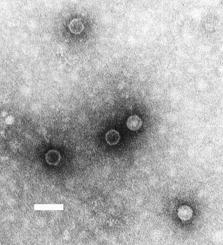Julius Youngner facts for kids
Quick facts for kids
Julius Youngner
|
|
|---|---|
| Born |
Julius S. Youngner
24 October 1920 |
| Died | April 27, 2017 (aged 96) Pittsburgh, Pennsylvania
|
| Alma mater | New York University University of Michigan |
| Known for | First polio vaccine, equine influenza vaccine |
| Spouse(s) | Rina Youngner |
| Scientific career | |
| Fields | Microbiology Virology |
| Institutions | United States Army(-1946) U.S. Public Health Service, National Institutes of Health, United States Navy University of Pittsburgh School of Medicine and Department of Microbiology & Molecular Genetics (1949-2000) |
| Influenced | Patricia Whitaker-Dowling |
Julius S. Youngner (born October 24, 1920 – died April 27, 2017) was an American scientist. He was a professor at the University of Pittsburgh. Youngner made important discoveries that helped create the vaccine for polio. He also developed the first intranasal (nose spray) vaccine for horse flu, called equine influenza.
When Youngner was a child, he got sick many times. This made him interested in how diseases spread. He studied biology and later joined the Jonas Salk research team. This team worked on the polio vaccine.
Youngner helped find ways to make large amounts of the polio virus safely. He also created quick tests to measure the virus in living cells. His work was very important for the success of the polio vaccine. He also helped discover gamma interferon, which is a protein that helps the body fight infections. Youngner was a strong supporter of honest research and safe medicines.
Contents
Early Life and School
Julius Youngner was born in 1920 in Manhattan, New York. His father was a businessman. When Youngner was seven years old, he almost died from a serious lung infection called lobar pneumonia.
He finished Evander Childs High School when he was 15. In 1939, he earned a degree in English from New York University. Later, he got a science degree in microbiology from the University of Michigan. After that, he worked at the National Cancer Institute (NCI).
During World War II, Youngner was drafted into the U.S. Army. He worked on secret research about uranium salts. This research was important for purifying uranium for nuclear studies. At the time, Youngner did not know it was related to weapons. He thought nuclear energy would be used for transportation.
Discoveries for Vaccines
In 1949, Youngner moved to the University of Pittsburgh. He spent the rest of his career there, studying virology (the study of viruses). In 1960, he became a professor of microbiology. He also led the Department of Microbiology for a few years.
Youngner made three major breakthroughs that helped create the polio vaccine:
- He found a way to separate monkey kidney cells. This allowed scientists to grow large amounts of the polio virus.
- He developed a process to make the virus safe for vaccines, while still allowing it to protect people.
- He created safety tests for vaccine batches. These tests checked for anti-polio antibodies in people who received the vaccine.
His colleague once said, "Juli figured out how to grow the virus, how to inactivate it, and then he figured how to test the immune response to see if it worked."
Growing the Polio Virus
Youngner showed how to separate monkey kidney cells using an enzyme called trypsin. This method meant that one monkey kidney could produce enough material for 6,000 polio vaccine shots. This big step made it possible to produce the vaccine on a large scale.
Testing Vaccine Safety
Youngner also created a way to quickly and safely test batches of the vaccine. This test could also check for antibodies to the virus after people received the vaccine. He found that changes in the pH (a measure of acidity or alkalinity) could show if cells were infected with the virus. It could also show if cells had antibodies against the virus. A special dye called phenol red made these pH changes easy to see.
Making Polio Vaccine Safe
The Salk polio vaccine uses a weakened form of the virus. Youngner developed a color test that helped scientists understand how to safely weaken the virus using a chemical called formalin. His work showed that if formalin was applied for six days, there would be almost no live virus left in the vaccine. By 1954, the first vaccine trials had given protection to 800,000 children against polio.
Horse Flu Vaccine
Youngner also created the first vaccine for equine influenza, which is a type of flu that affects horses. Before his vaccine, horses needed shots up to six times a year and still weren't fully protected. Youngner's vaccine used a "cold-adapted" flu virus. This virus only grows at the cooler temperatures found in a horse's nose and throat. This new vaccine offered much better protection for up to a year.
Patents and Personal Life
Youngner held patents for ways to purify and concentrate viruses and vaccines. This helped reduce problems caused by egg proteins in some vaccines. He also contributed to patents for cold-adapted influenza viruses.
Youngner married Tula Liakakis in 1943. They had a son, Stuart, and a daughter, Lisa. Tula passed away in 1963. In 1964, he married Rina Balter. They did not have children together but were active in their community in Pittsburgh, Pennsylvania. Julius Youngner died in Pittsburgh after a short illness.


